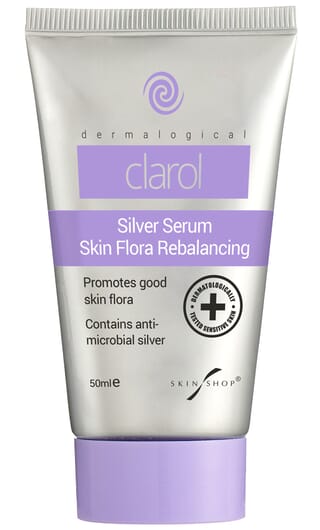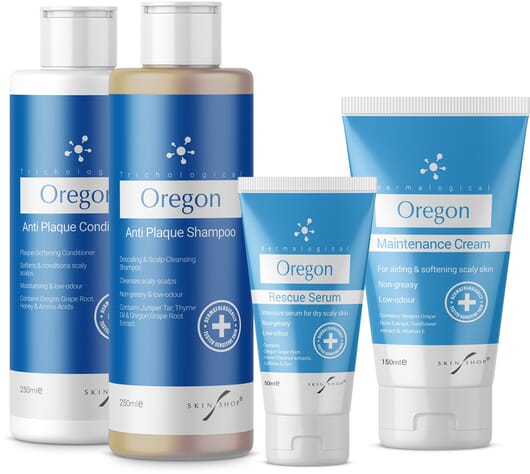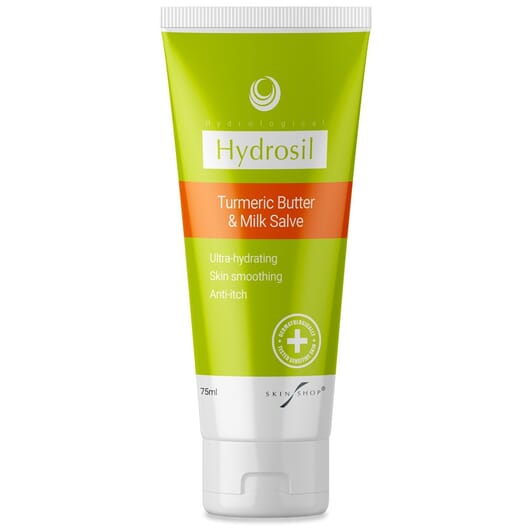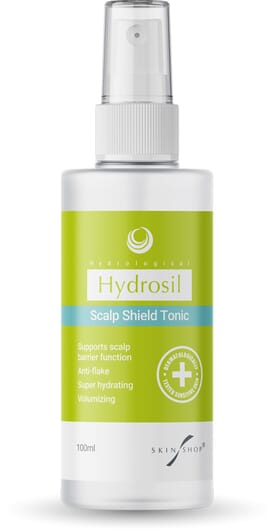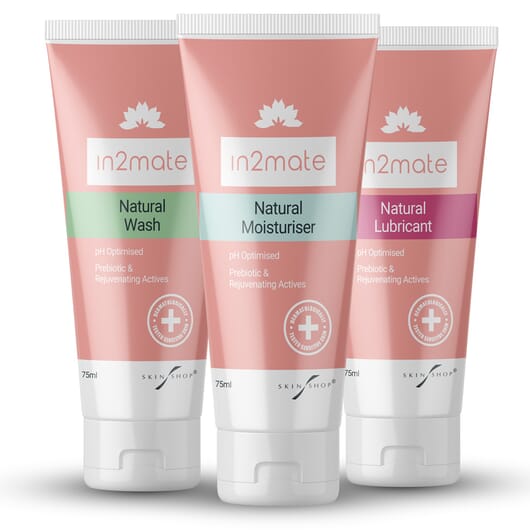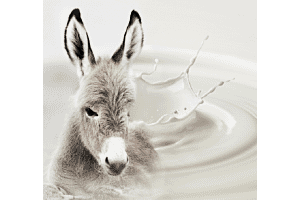After a hotter and drier summer than we have seen in the UK and Europe for years, the rain has finally arrived.
The first of what looks to be a carousel of autumnal storms have begun, bringing with it low pressure and plenty of rain.
With many areas of the UK and Europe suffering drought this year, the land could do with a good drenching.
However, for skin, rainwater isn’t quite so advantageous. “Rainwater, in particular wintry colder rain in urban environments, can be especially problematic for those suffering from atypical skin,” says consultant dermatologist Dr Eva Melegh. “The combination of pollutants, an acidic pH and dirt contained in a lot of urban rainwater can have a detrimental effect on several sensitive skin conditions.”

Dr Melegh outlines 6 skin conditions that can be triggered by rain and how to protect skin from a these watery woes;
1. Eczema and rain
Rainwater in the UK is quite acidic, which can be a trigger for a flare up for eczema.
Minerals and chemicals in rainwater can also strip the skin of its natural oils, leading to dryness, which is a particular problem to eczema prone skin and atopic skin.
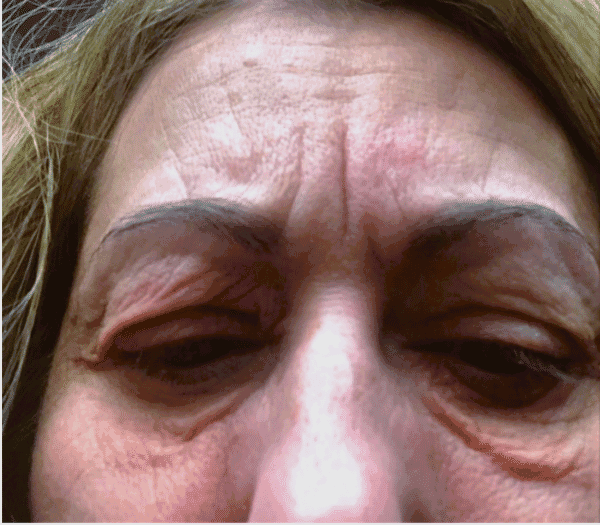
Damp humid conditions during and after heavy rainfall can also increase the risk of bacterial and fungal skin infections, raising the risk of open eczema and lesions becoming infected.
Rainwater carrying pollutants can quickly stick to hair and eyebrows, which can trigger to scalp irritation, scalp eczema, eyebrow eczema and eyebrow dermatitis, especially for people with porous hair cuticles.
Excessive moisture from rain can disrupt the scalp's natural balance, which can cause a weakened scalp barrier function that can lead to scalp irritation from TEWL (trans epidermal water loss).
How to protect eczema-prone skin & scalp from the rain
Using heavier emollients isn’t necessarily the answer here as the pollutants in the rain can stick to stick heavy creams and overburden skin. They can also get washed off with rain.
For skin salves are better skin protectors than creams in rainy conditions. Look for products that contain natural anti-inflammatories as well as hydrating ingredients. Some additional prebiotic ingredients for skin barrier repair would also be highly beneficial.
Try Hydrosil Turmeric Butter & Milk Salve which contains concentrated turmeric, one of nature’s best anti-inflammatories, a plant-steroid that mimics the action of chemical steroids with the associated risks to reduce itching and hypoallergenic donkey milk to hydrate an soothe dry itchy and atopic skin.
Also be mindful to also treat scalps prone to irritation and flaking during rainy weather with products that reduce scalp inflammation and repair scalp barrier function.
Try Hydrosil Scalp Shield Tonic sprayed on clean damp hair. It contains a plant steroid to reduce itching and a prebiotic to repair scalp barrier function to reduce TEWL (trans epidermal water loss) helping to prevent itching and flaking.

Reducing hair and scalps getting damp by using a waterproof hood or umbrella can also help reduce the risk of bacterial overgrowth o the scalp. Increased hair drying of damp rain-drenched hair can also increase scalp dryness which will only add to the problem.
2. Psoriasis and rain
Psoriatic skin is particularly vulnerable to low pressure weather that brings rains and storms as not only can the rainwater itself be problematic, but studies have also found an increase in the formation of scaly skin when exposed to low pressure weather (1). There’s also much less sun in rainy conditions and studies show that psoriasis improves with UV exposure (2).
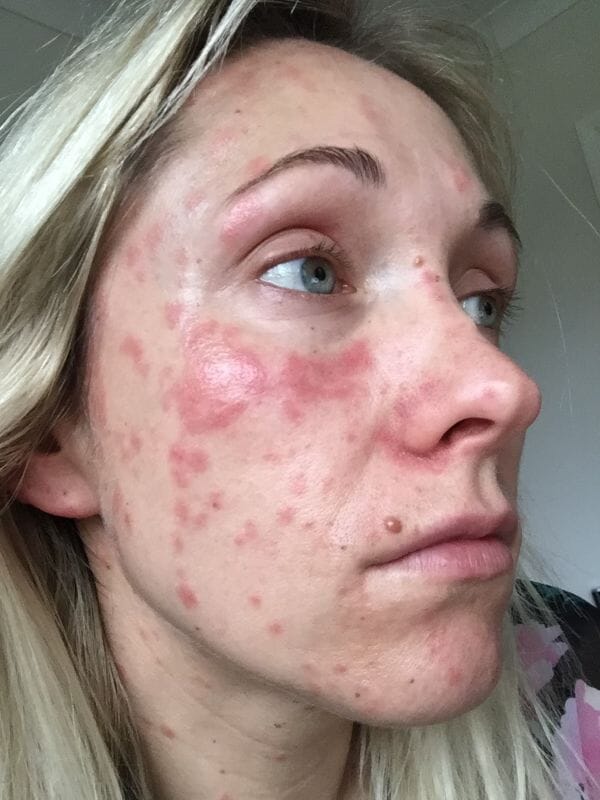
Damp conditions during heavy rainfall can increase the risk of bacterial and fungal skin infections, raising the risk of open psoriasis lesions becoming infected.
How to protect psoriasis from the rain
Try not to let clothes get damp from downpours and if they do then don’t sit in them for long periods afterwards as this can help bacteria breed quickly in warm damp skin crevices which can exacerbate psoriasis flares.
Keep skin and scalps prone to psoriasis protected against the rain by using skincare that is dedicated to preventing scale build up. Try Oregon Skincare which is a skin and hair re range that contains Oregon grape root which studies have shown helps inhibit skin cell turnover (3) as well as moisturise and calm psoriatic skin.
3. Acne and rain
Urban rainwater often contains dirt and soot particles that can quickly clog pores and lead to acne breakouts.
Damp humid conditions during heavy rainfall are ripe for bacteria to breed quickly so this can increase the risk of bacterial overgrowth in acne-prone skin, leading to worsening symptoms.
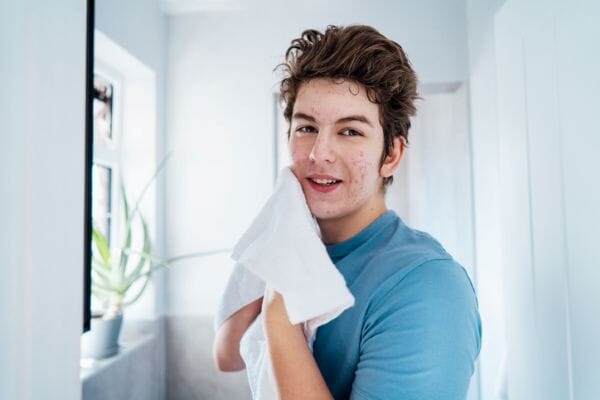
People with open or wider pores are particularly vulnerable to rain-borne dirt and bacteria and the dirty water can easily enter the open pores and cause blockages, blackheads and infected pores.
How to protect acne from the rain
The main issue for acne during rainy conditions is the risk of increased bacterial on the skin and open pores. But using harsh anti-bacterial products to control the bacterial growth tends to end up killing off all the good skin bacteria to, meaning that in the long-term the acne breakout cycle gets increasingly worse. The idea is to only inhibit the growth of bad skin bacteria in damp weather.
Try Clarol Silver Serum a light skin serum that contains a smart anti-bacterial agent made from a patented silver extract that starves bad skin bacteria causing it to gradually die off but feeds good ski bacteria. It stays active on the skin for eight hours, meaning if applied twice a day it constantly works at re-balancing bacterial overgrowth to help prevent acne forming and to make skin more roust against repeated acne breakouts and can be worn under cosmetics.
4. Rosacea and rain
Rainwater can contain minerals or pollutants that can trigger underlying inflammation in rosacea-prone skin as well as cause uneven skin tone.
High humidity in damp rainy conditions can cause blood vessels to widen, increasing blood flow to the face and increasing the risk of a rosacea flare.
Dirty and polluted rainwater can also compromise skin barrier function, allowing more external bacteria to get into the inflamed open pores of rosacea-prone skin and make the underlying inflammation and redness worse.
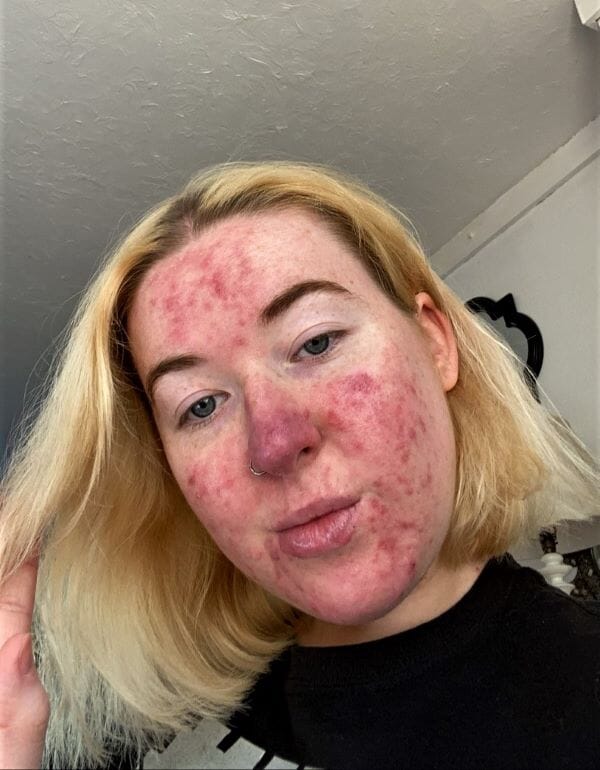
The sudden temperature changes of cold rain on warm skin can be an instant trigger for a rosacea flare.
How to protect rosacea from the rain
The two best methods to reduce the risk of a rosacea flare is to be mindful of all potential inflammation triggers and use preventative anti-inflammatory skincare along with making sure to use an SPF despite the fact that it’s raining as UV rays still penetrate through rain clouds.
During rainy conditions try and prevent rain landing directly on your face by using a large umbrella. This reduces the risk of an inflammation trigger caused a rapid temperature change when the cold rain hits warm skin. Avoid hot drinks or eating hot food straight after coming in from rainy conditions outside and try and wait at least an hour before turning the heating on when coming side from rainy conditions.
Use targeted anti-inflammatory skincare with a mineral SPF of at least 30. Try Kalme Skincare, a complete rosacea-care range that contains a basket of anti-redness and anti-inflammatory ingredients targeted specifically at rosacea-prone skin along with a pure zinc mineral SPF40 for daily use.
5. Intimate irritation and rain
It’s more the humidity of rainy conditions and unbreathable waterproof clothing during heavy rainfall that increases the risk of intimate bacterial and fungal skin infections, raising the occurrence of vaginal itching and discomfort due to bacterial and fungal overgrowth (4).
How to protect intimate skin from the humidity and rain
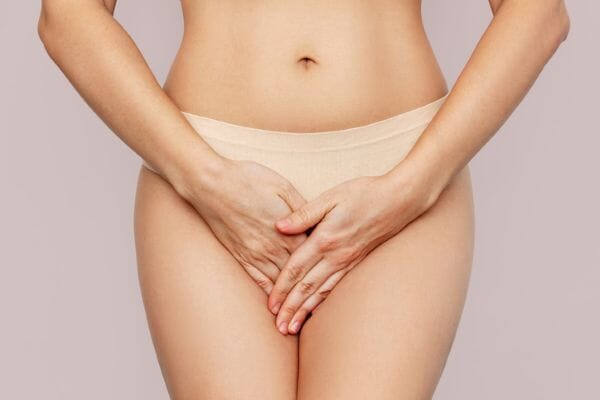
Don’t wear too many layers of clothing under waterproof outer clothes, especially around the crouch area. If possible, avoid nylon tights and try to wear longer length skirts under waterproof clothes rather than trousers.
Stick to breathable natural fabric underpants and make sure intimate areas are thoroughly dried after washing. Once in the house, if possible, remove underwear and wear house clothes that are breathable and not tight fitting.
Use protective intimate skincare that is chemical and perfume free with protective ingredients to guard against bacterial and fungal build up.
Try In2mate Skincare, an intimate skincare range that contains ingredients to reduce bacterial and fungal build up, as well as gently moisturising ingredients and prebiotics designed specifically for intimate skin that helps increase growth of good bacteria in internal and external vaginal skin to protect against bad bacterial overgrowth and keep vaginal pH at a healthy level.
6. Sensitive & Reactive skin and rain
Studies show that increased rainwater and flooding risks can damage skin by carrying pollutants, especially in more urban areas, that can cause irritation, especially in sensitive skin and skin prone to dermatitis (5).
Rainwater carrying pollutants can quickly stick to hair and eyebrows, which can trigger both contact scalp dermatitis and eyebrow dermatitis.
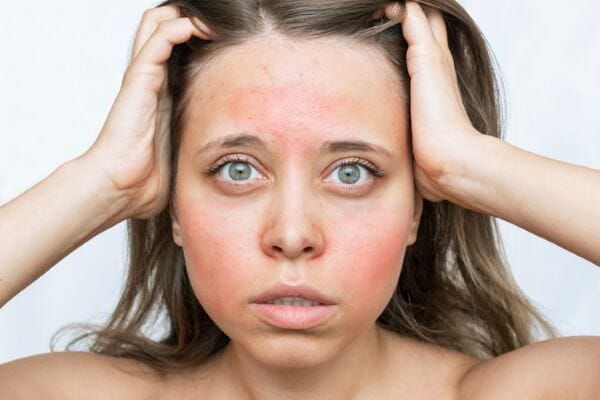
How to protect sensitive skin from the rain
Use a skin barrier protection cream that helps to reduce the sensitivity response mechanism in sensitive skin. Try Kalm Undercoat that contains a specific ingredient that can reduce skin sensitivity by up to 70% and can be worn as a standalone moisturiser or under all cosmetics or other skin care products.
Refs:
https://pubmed.ncbi.nlm.nih.gov/24528115/
https://pubmed.ncbi.nlm.nih.gov/21271993/
https://pubmed.ncbi.nlm.nih.gov/30666279/
https://www.sciencedirect.com/science/article/pii/S2667278222000517
https://pubmed.ncbi.nlm.nih.gov/37336870/




